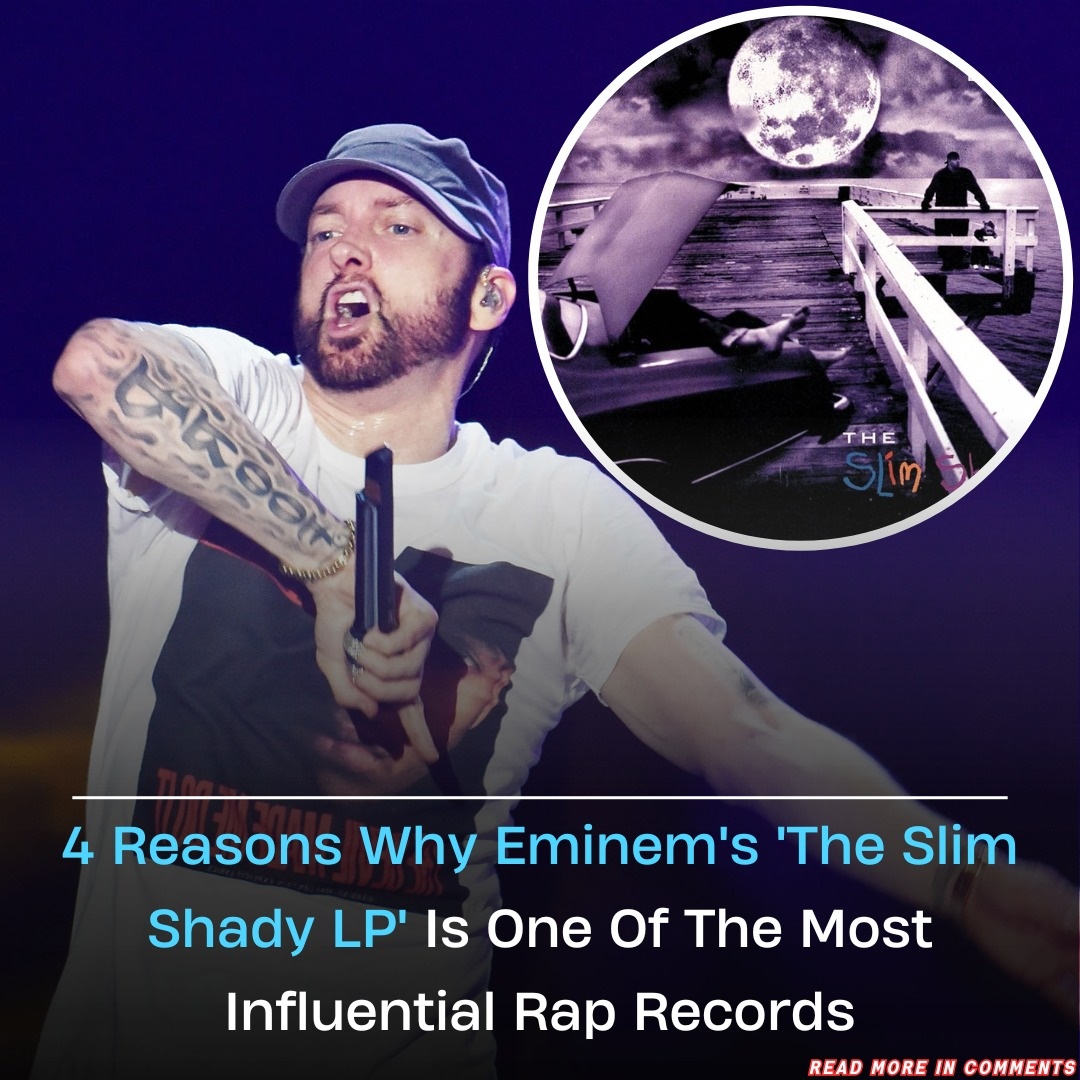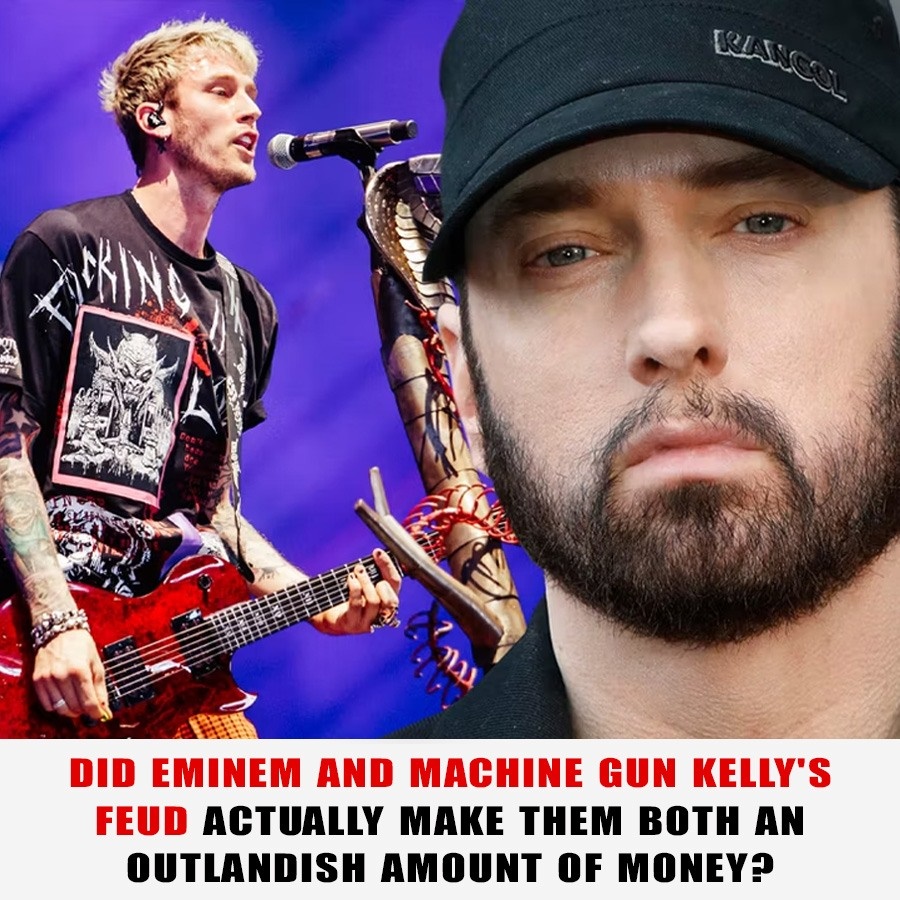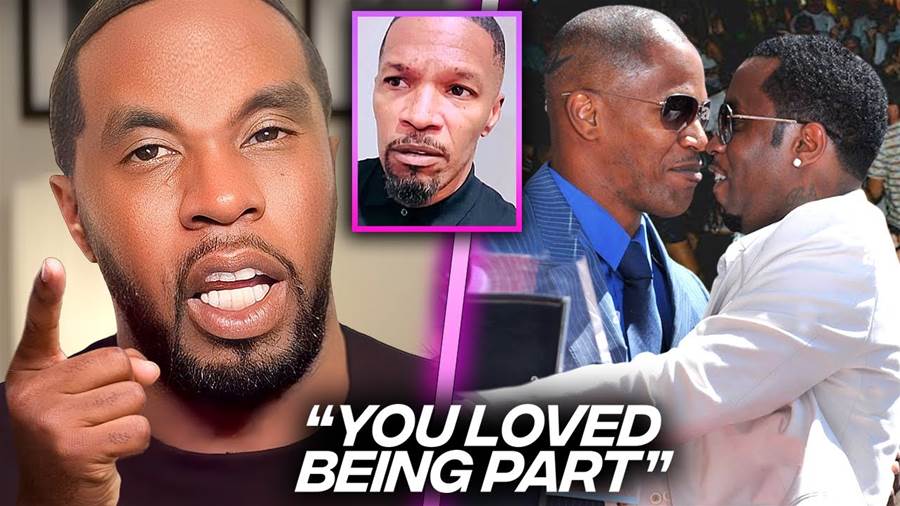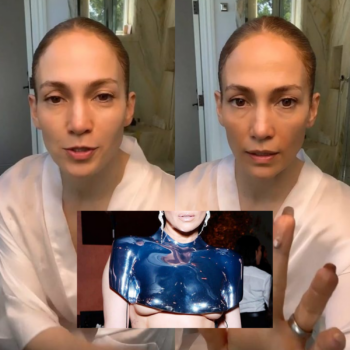
Discover the Impact: How Eminem’s ‘The Slim Shady LP’ Revolutionized Rap Music

Eminem’s major label debut, ‘The Slim Shady LP,’ turns 25 on Feb. 23. The album left an indelible imprint on hip-hop, and introduced the man who would go on to be the biggest-selling artist of any genre in the ensuing decade.
A quarter century has passed since the mainstream music world was first introduced to a bottle-blonde enfant terrible virtuoso who grabbed everyone’s attention and wouldn’t let go
But enough about Christina Aguilera.
Just kidding. Another artist also exploded into stardom in 1999 — one who would become a big enough pop star, despite not singing a note, that he would soon be feuding with Xtina. Eminem’s biting major label debut The Slim Shady LP turns 25 on Feb. 23. While it was Eminem’s second release, the album was the first taste most rap fans got of the man who would go on to be the biggest-selling artist in any genre during the ensuing decade. It also left an indelible imprint on hip-hop.
The Slim Shady LP is a record of a rapper who was white (still a comparative novelty back in 1999), working class and thus seemingly from a different universe than many mainstream rappers in the “shiny suit era.” And where many of those contemporaries were braggadocious, Eminem was the loser in his rhymes more often than he was the winner. In fact, he talked so much about his real-life childhood bully on the album that the bully ended up suing him.
It was also a record that played with truth and identity in ways that would become much more difficult once Em became world famous. Did he mean the outrageous things he was saying? Where were the knowing winks, and where were they absent? The guessing games that the album forced listeners to play were thrilling — and made all the more intense by his use of three personas (Marshall Mathers the person; Eminem the battle rapper; and Slim Shady the unhinged alter ego) that bled into each other.
And, of course, there was the rhyming. Eminem created a dizzying array of complicated compound rhymes and assonances, even finding time to rhyme “orange” — twice. (If you’re playing at home, he paired “foreign tools” with “orange juice” and “ignoring skill” with “orange bill.”)
While the above are reason enough to revisit this classic album, pinpointing The Slim Shady LP‘s influence is a more complicated task. Other records from that year — releases from Jay-Z, Nas, Lil Wayne, Ludacris, and even the Ruff Ryders compilation Ryde or Die Vol. 1 — have a more direct throughline to the state of mainstream rap music today. So much of SSLP, on the other hand, is tied into Eminem’s particular personality and position. This makes Slim Shady inimitable; there aren’t many mainstream rappers complaining about their precarious minimum wage job, as Em does on “If I Had.” (By the time of his next LP, Em had gone triple-platinum and couldn’t complain about that again himself.)
But there are aspects of SSLP that went on to have a major impact. Here are a few of the most important ones.
It Made Space For Different Narratives In Hip-Hop
Before Kanye rapped about working at The Gap, Eminem rapped about working at a burger joint. The Slim Shady LP opened up space for different narratives in mainstream rap music.
The Slim Shady LP didn’t feature typical rags-to-riches stories, tales of living the high life or stories from the street. Instead, there were bizarre trailer-park narratives (in fact, Eminem was living in a trailer months after the record was released), admissions of suicidal ideation (“That’s why I write songs where I die at the end,” he explained on “Cum on Everybody”), memories of a neglectful mother, and even a disturbing story-song about dumping the corpse of his baby’s mother, rapped to his actual child (who cameos on the song).
Marshall Mathers’ life experience was specific, of course, but every rapper has a story of their own. The fact that this one found such a wide audience demonstrated that audiences would accept tales with unique perspectives. Soon enough, popular rappers would be everything from middle-class college dropouts to theater kids and teen drama TV stars.
The Album Explored The Double-Edged Sword Of The White Rapper
Even as late in the game as 1999, being a white rapper was still a comparative novelty. There’s a reason that Em felt compelled to diss pretty much every white rapper he could think of on “Just Don’t Give a F—,” and threatened to rip out Vanilla Ice’s dreadlocks on “Role Model”: he didn’t want to be thought of like those guys.
“People don’t have a problem with white rappers now because Eminem ended up being the greatest artist,” Kanye West said in 2015. You can take the “greatest artist” designation however you like, but it’s very true that Eminem’s success meant a categorical change in the status of white rappers in the mainstream.
This turned out to be a mixed blessing. While the genre has not, as some feared, turned into a mostly-white phenomenon, America’s racial disparities are often played out in the way white rappers are treated. Sales aside, they have more room to maneuver artistically — playing with different genres while insulting rap a la Post Malone, or even changing styles completely like Machine Gun Kelly — to commercial approbation. Black artists who attempt similar moves are frequently met with skepticism or disinterest (see André 3000’s New Blue Sun rollout, which was largely spent explaining why the album features no rapping).
Sales are worth speaking about, too. As Eminem has repeatedly said in song, no small amount of his popularity comes from his race — from the fact that white audiences could finally buy music from a rapper who looked like them. This was, as he has also bemusedly noted, the exact opposite of how his whiteness worked for him before his fame, when it was a barrier to being taken seriously as a rapper.
For better, worse, or somewhere in between, the sheer volume of white rappers who are currently in the mainstream is largely traceable to the world-beating success of The Slim Shady LP.
It Was Headed Towards An Odd Future
SSLP laid groundwork for the next generation of unconventional rappers, including Tyler, the Creator.
Tyler is a huge Eminem fan. He’s said that listening to Em’s SSLP follow-up The Marshall Mathers LP was “how I learned to rap.” And he’s noted that Em’s Relapse was “one of the greatest albums to me.”
“I just wanted to rap like Eminem on my first two albums,” he once told GQ. More than flow, the idea of shocking people, being alternately angry and vulnerable, and playing with audience reaction is reflected heavily on Tyler’s first two albums, Goblin and Wolf. That is the template The Slim Shady LP set up. While Tyler may have graduated out of that world and moved on to more mature things, it was following Em’s template that first gained him wide notice.
Eminem Brought Heat To Cold Detroit
The only guest artist to spit a verse on The Slim Shady LP is Royce da 5’9″. This set the template for the next few years of Eminem’s career: Detroit, and especially his pre-fame crew from that city, would be his focus. There was his duo with Royce, Bad Meets Evil, whose pre-SSLP single of “Nuttin’ to Do”/”Scary Movies” would get renewed attention once those same two rappers had a duet, smartly titled “Bad Meets Evil,” appear on a triple-platinum album. And of course there was the group D12, five Detroit rappers including his best friend Proof, with whom Eminem would release a whole album at the height of his fame.
This was not the only mainstream rap attention Detroit received in the late 1990s. For one thing, legendary producer James “J Dilla” Yancey, was a native of the city. But Eminem’s explosion helped make way for rappers in the city, even ones he didn’t know personally, to get attention.
The after-effects of the Eminem tsunami can still be seen. Just look at the rise of so-called “scam rap” over the past few years. Or the success of artists like Babyface Ray, Kash Doll, 42 Dugg, and Veeze. They may owe little to Em artistically, but they admit that he’s done great things for the city — even if they may wish he was a little less reclusive these days.















